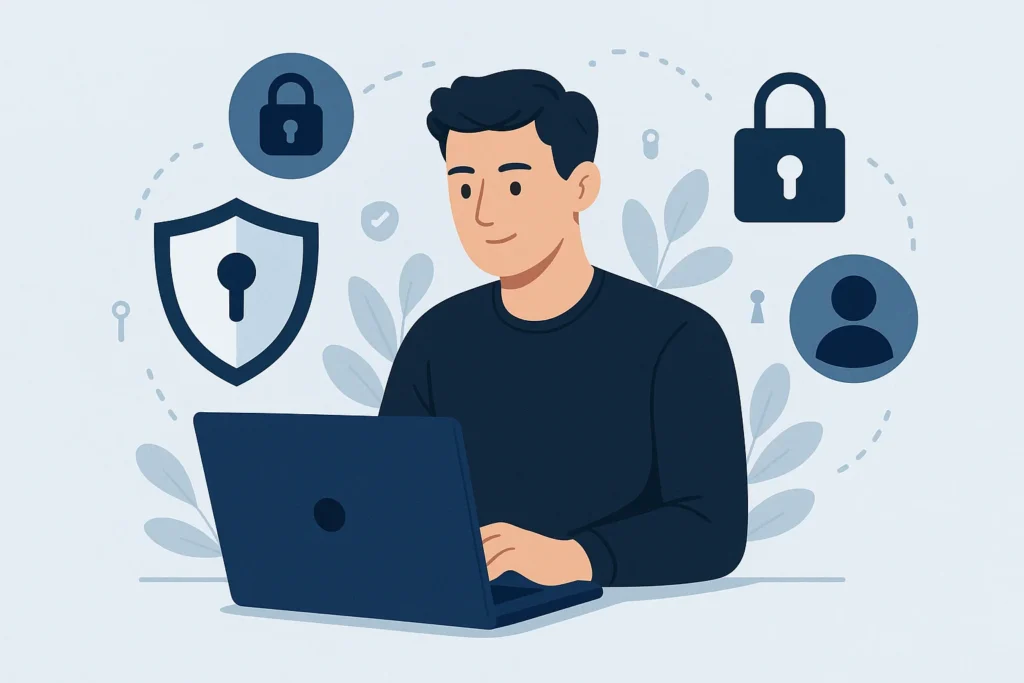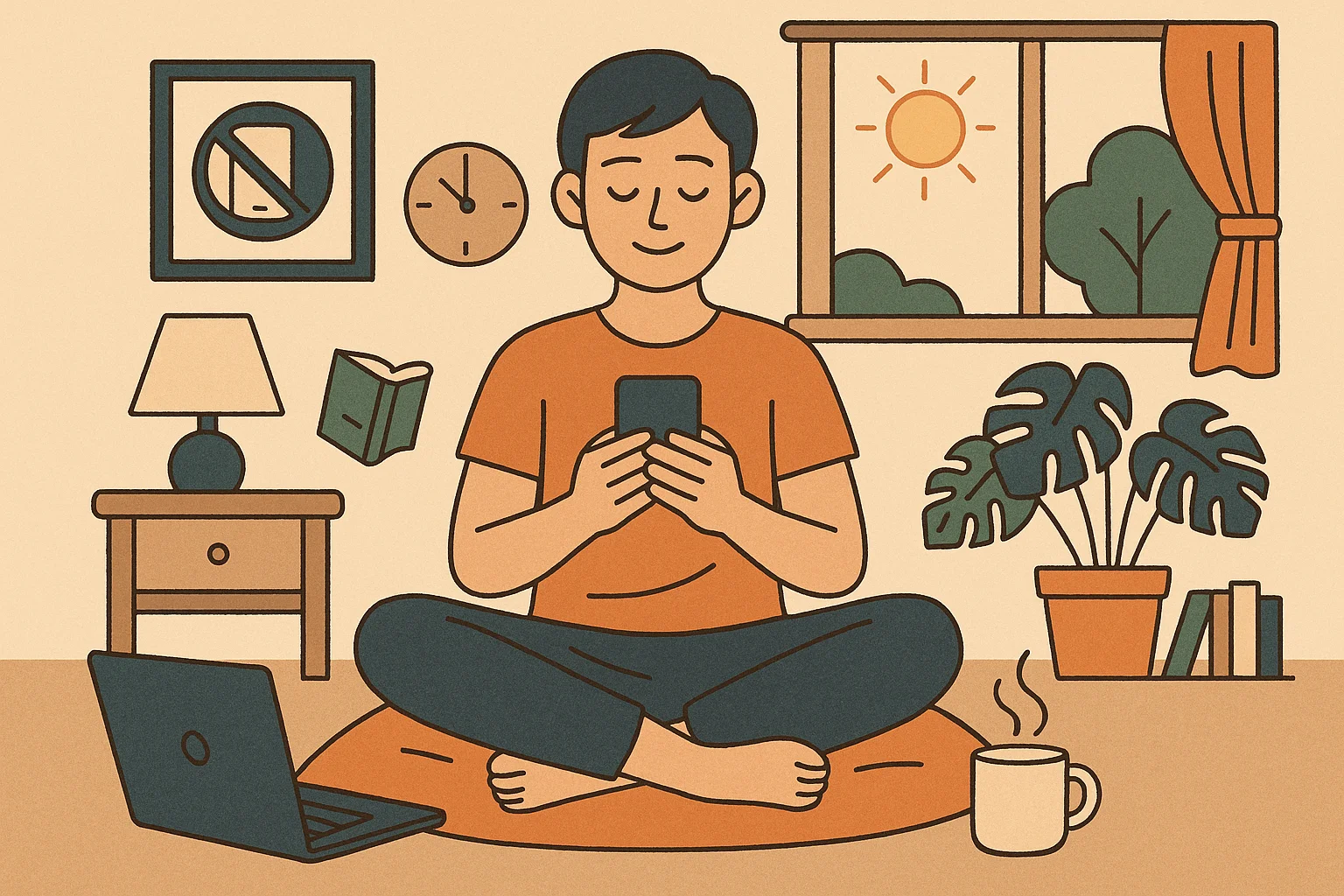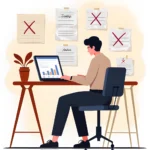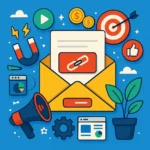Now Reading: 6 Digital Detox Strategies for Busy Professionals
-
01
6 Digital Detox Strategies for Busy Professionals
6 Digital Detox Strategies for Busy Professionals

When was the last time you went an entire hour without checking your phone? For many busy professionals, the answer might be “I can’t remember.” Our digital dependence has reached unprecedented levels, with the average person checking their phone 96 times daily. I’ve researched and tested numerous digital detox strategies for busy professionals that don’t require abandoning your career ambitions. The results were surprising-and life-changing.
Key Takeaways
What are effective digital detox strategies for busy professionals?
- Create tech-free zones in your home and office to establish boundaries with your devices
- Schedule daily 30-minute digital detox breaks to recharge your mind and improve focus
- Use apps to monitor and limit social media usage to regain control of your screen time
- Practice mindful, single-task work sessions to boost productivity without constant connectivity
- Develop a digital detox schedule with specific tech-free periods throughout your week
- Engage in offline hobbies during evenings to relax and disconnect from work pressures
Creating Tech-Free Zones At Home And Work
One of the most effective digital detox strategies I’ve implemented is establishing clear tech-free zones. These designated areas serve as sanctuaries from the constant pull of digital devices.
In Your Home
Start by making your bedroom a completely device-free zone. The benefits are immediate and significant:
- Improved sleep quality: Without the blue light from screens disrupting melatonin production, you’ll fall asleep faster and enjoy deeper rest
- Enhanced relationship quality: Couples who ban phones from the bedroom report better communication and intimacy
- Reduced anxiety: Breaking the habit of checking emails before sleep reduces work-related stress
The dining area should be your second tech-free zone. I’ve found that meals without devices lead to better digestion, more mindful eating, and meaningful conversations with family or friends.
In Your Workplace
Even in a technology-dependent workplace, creating tech-free zones is possible:
- Designate a meeting room as a “no device” space for brainstorming sessions
- Create a comfortable corner with comfortable seating where you can take breaks without screens
- Use visual cues like plants or artwork to signify tech-free areas
One of my clients, a marketing executive, reported a 30% increase in team creativity after implementing a tech-free conference room where phones and laptops were left at the door. The initial resistance quickly gave way to more focused, productive discussions.
By physically separating yourself from technology in specific areas, you create mental space for deeper thinking, better rest, and more authentic connections-all without sacrificing your professional responsibilities.
Useful Articles:
Scheduling Daily 30-Minute Digital Detox Breaks
As counterintuitive as it might seem, taking regular breaks from technology actually increases productivity rather than reducing it. I recommend scheduling at least one 30-minute digital detox break daily, even during your busiest workdays.
How to Implement Effective Breaks
The key is consistency and intentionality:
- Set a recurring calendar appointment with yourself for your digital detox break
- Turn off all notifications and place devices in another room or drawer
- Use an analog alarm rather than your phone to time your break
- Plan a specific non-digital activity for this time to prevent defaulting back to screens
Activities for Your Digital Detox Break
Your break should be refreshing and distinct from screen time:
- Take a walk outdoors without your phone to benefit from nature’s restorative effects
- Practice a brief meditation to clear mental clutter and reduce stress
- Read a physical book or magazine related to personal interests rather than work
- Have a face-to-face conversation with a colleague over coffee
One banking executive I worked with implemented a daily 2:30 PM “digital sunset” break. After initial skepticism, she reported feeling more energized for late-afternoon meetings and experienced a significant reduction in end-of-day headaches.
The science supports this approach: research shows that our brains operate in two distinct modes-focused and diffuse. The diffuse mode, activated during breaks from intense concentration, is essential for problem-solving and creativity. By scheduling regular digital detox breaks, you’re not just resting-you’re engaging different neural pathways that lead to better solutions.
Using Apps To Limit Social Media Screen Time
There’s a certain irony in using technology to limit technology use, but specialized apps can be powerful allies in your digital detox journey. As someone who once lost hours to mindless scrolling, I’ve found these tools invaluable for maintaining boundaries.
Recommended Screen Time Management Apps
Several effective options exist for both iOS and Android users:
- Freedom: Blocks distracting websites and apps across all your devices simultaneously
- Forest: Plants a virtual tree that grows while you stay off your phone; the tree dies if you exit the app
- Moment: Tracks your usage and sends notifications when you exceed predetermined limits
- StayFree: Provides detailed analytics about your app usage patterns to identify problem areas
Setting Up Effective Limits
The key is creating realistic boundaries that support your work while eliminating unnecessary distractions:
- Start with an honest assessment of your current usage patterns
- Set app-specific time limits rather than blanket restrictions
- Schedule specific times for checking social media rather than random access throughout the day
- Use the “batch processing” technique by checking platforms just 2-3 times daily at scheduled intervals
I’ve found that limiting social media to 15 minutes in the morning and 15 minutes in the evening prevents the constant attention fragmentation that destroys productivity while still keeping me connected to important networks.
Leveraging Built-in Phone Features
Both iOS and Android now offer robust screen time management tools:
- Screen Time (iOS): Set app limits, schedule downtime, and receive weekly reports
- Digital Wellbeing (Android): Create app timers, activate focus mode, and use the wind-down feature
By consciously managing your social media consumption, you regain control over your attention-your most valuable professional asset. One tech executive I coached reduced his social media use by 70% using these techniques and reported feeling “mentally lighter” within just one week.
Useful Articles:
Practicing Mindful, Single-Task Work Sessions
Multitasking is a myth. What we call “multitasking” is actually rapid task-switching, which research shows can reduce productivity by up to 40%. One of the most powerful digital detox strategies for busy professionals is returning to focused, single-task work sessions.
The Pomodoro Technique
This time-management method has transformed my workday and that of many clients:
- Choose one specific task to focus on
- Set a timer for 25 minutes (one “Pomodoro”)
- Work exclusively on that task until the timer rings
- Take a short 5-minute break
- After four Pomodoros, take a longer 15-30 minute break
During each Pomodoro, all digital distractions are eliminated-notifications turned off, email closed, phone in another room. This creates a mini digital detox within your workday.
Creating Distraction-Free Work Environments
To support single-tasking:
- Use website blockers like Cold Turkey or Freedom during focus sessions
- Close unnecessary tabs and applications
- Put your phone in “Do Not Disturb” mode or in another room
- Communicate your focus time to colleagues through status messages or calendar blocks
The Benefits of Single-Tasking
The results of this approach are remarkable:
- Deeper work quality: Tasks that once took hours of distracted time can often be completed in 1-2 focused Pomodoros
- Reduced mental fatigue: Your brain expends less energy when it’s not constantly switching contexts
- Greater work satisfaction: Completing tasks fully before moving to the next creates a sense of accomplishment
A software developer I worked with implemented this technique and completed a project in three days that she had initially estimated would take two weeks. The difference wasn’t working longer hours-it was working with complete focus in shorter bursts.
Developing A Digital Detox Schedule
While spontaneous breaks from technology are valuable, I’ve found that creating a structured digital detox schedule yields more consistent benefits. This approach integrates regular disconnection into your routine without disrupting professional responsibilities.
Creating Your Weekly Digital Detox Plan
A balanced schedule might include:
- Tech-free mornings: The first hour after waking dedicated to meditation, exercise, or reading
- Device-free lunches: Taking actual breaks during meals rather than working through them
- Evening digital sunsets: Turning off work devices at least 90 minutes before bedtime
- Screen-free Sundays: A full day without work-related technology use
Implementing Gradual Changes
If a comprehensive schedule feels overwhelming:
- Start with one tech-free period per day and gradually expand
- Use the “replacement principle” by planning specific non-digital activities
- Track your progress with a simple journal to reinforce positive changes
Communicating Your Boundaries
Setting expectations with colleagues and clients is crucial:
- Update your email signature with your digital availability hours
- Use auto-responders during your offline periods
- Explain the productivity benefits to your team to encourage understanding
One financial advisor I coached implemented a “no email after 7 PM” policy and found that not only did his stress levels decrease, but his clients actually respected him more for having clear boundaries.
The key is consistency. A digital detox schedule works best when it becomes a non-negotiable part of your routine rather than an occasional exception.
Useful Articles:
Engaging In Offline Hobbies During Evenings
Perhaps the most enjoyable digital detox strategy is rediscovering offline activities that bring genuine pleasure and relaxation. Many busy professionals have forgotten what they used to enjoy before smartphones dominated their leisure time.
Rediscovering Analog Pleasures
Consider exploring:
- Physical activities: Hiking, cycling, dance classes, or team sports
- Creative pursuits: Drawing, painting, woodworking, or playing an instrument
- Culinary experiences: Cooking new recipes, wine tasting, or food exploration
- Social connections: Board game nights, dinner parties, or community volunteering
The key is finding activities that are engaging enough to prevent the urge to check your phone.
Creating an Environment for Offline Engagement
To support your offline hobbies:
- Designate a specific area in your home for your hobby
- Invest in quality materials that make the activity more enjoyable
- Join groups or classes to add social accountability
- Keep devices physically distant during hobby time
The Professional Benefits of Offline Hobbies
Beyond the immediate pleasure, offline activities offer significant career advantages:
- Enhanced creativity: Different neural pathways activate during hands-on activities
- Improved problem-solving: Distance from work challenges often leads to breakthrough insights
- Stress reduction: Physical activities particularly help reduce cortisol levels
- Expanded perspective: New experiences generate fresh thinking applicable to work challenges
A management consultant I worked with took up pottery classes two evenings a week. Not only did she report sleeping better on those nights, but she also found herself approaching client problems with more creative solutions after several weeks of this practice.
By engaging in activities that require presence and manual engagement, you give your brain a complete break from digital stimulation, allowing for deeper recovery and rejuvenation.
Implementing A Full Weekend Digital Detox
While daily digital breaks are valuable, occasionally implementing a full weekend digital detox creates space for deeper recovery and perspective. I recommend trying this approach once a month.
Preparing for a Weekend Detox
Successful implementation requires preparation:
- Schedule your detox weekend at least two weeks in advance
- Inform key contacts that you’ll be unavailable
- Plan specific offline activities to fill the time
- Decide on your boundaries (complete disconnection or limited emergency access)
- Prepare physical materials like books, art supplies, or outdoor equipment
Managing Work Expectations
To prevent anxiety about missing important communications:
- Complete pressing projects before your detox weekend
- Set a detailed out-of-office message explaining when you’ll return
- Designate an emergency contact method if absolutely necessary
- Brief team members on handling issues in your absence
Easing Back Into Digital Life
The transition back to connectivity should be gradual:
- Schedule buffer time on Monday morning to process accumulated messages
- Prioritize responses rather than attempting to address everything immediately
- Reflect on insights gained during your disconnected time
- Identify practices from your detox that could become regular habits
A tech executive I advised initially resisted the idea of a full weekend detox, convinced his company would fall apart without his constant availability. After finally trying it, he was shocked to discover that not only did operations continue smoothly, but he returned with strategic insights that had eluded him during months of constant connectivity.
The perspective gained from a complete break often reveals which digital interactions are truly essential and which are merely habitual-valuable information for refining your ongoing relationship with technology.
Measuring The Impact Of Your Digital Detox
To maintain motivation for your digital detox practices, tracking their impact is essential. I recommend establishing baseline measurements before implementing these strategies, then reassessing regularly.
Key Metrics to Track
Consider monitoring:
- Sleep quality: Duration and how rested you feel upon waking
- Stress levels: Rate your stress on a 1-10 scale daily
- Productivity: Track completed tasks and time required
- Focus duration: How long you can work without feeling compelled to check devices
- Relationship satisfaction: Quality of personal and professional interactions
- Creative output: New ideas generated and problems solved
Tools for Measurement
Simple approaches work best:
- Keep a brief daily journal noting observations in these areas
- Use a habit tracker to monitor consistency with your digital detox practices
- Schedule monthly reviews to assess overall progress and adjust strategies
Celebrating Improvements
Acknowledging positive changes reinforces your commitment:
- Note even small improvements in your wellbeing or productivity
- Share successes with supportive colleagues or friends
- Adjust strategies based on what’s working best for your situation
One marketing director I worked with tracked her progress over three months of implementing digital detox strategies. She documented a 40% reduction in stress-related headaches, an average of 45 additional minutes of sleep nightly, and completing major projects an average of two days ahead of deadline-powerful motivation to maintain her new habits.
Implementing digital detox strategies for busy professionals isn’t about rejecting technology-it’s about reclaiming your relationship with it. By creating tech-free zones, scheduling regular breaks, managing screen time, practicing single-tasking, developing a detox schedule, engaging in offline hobbies, and occasionally unplugging completely, you can harness technology’s benefits while minimizing its costs to your wellbeing and productivity. Start with one strategy today, and watch as your focus, creativity, and satisfaction grow.
Useful Articles:





















